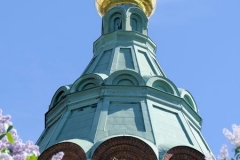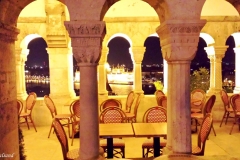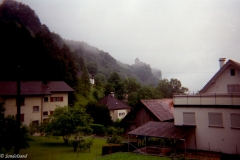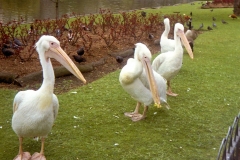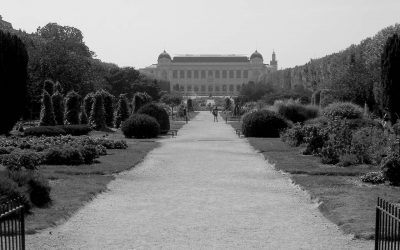Intro
Countries
Photos
Blog
Facts
Overall impressions
This is a picture from the “Old World”, the largely Protestant and ethnically quite homogeneous region stretching from Prague in the southeast to Ireland in the west to Scandinavia in the north – and to some extent Russia in the east. For four hundred years, between 1550/1600 and 1950/2000, countries in this region defined the world as we today know it. Geo-politically, economically, militarily, philosophically, culturally, and in terms of world languages.
All about this region is history. Everything older than 200 years fascinates Americans who come here. The OMGs emit at a constant pulse. This region hardly offers anything but 200+ years of historical artefacts. Asians who come here find consumers able to pay for their products. Africans coming here find nothing but a boot kicking them back home again.
The region’s population is (at least relatively speaking) in decline, it is ageing, the economic importance is becoming negligent, innovations take place elsewhere in the world, the region’s countries have for decades been vassal states under an external superpower. Europe as a whole is splitting apart in infighting, selfishness and an overburdened welfare state.
Countries
Armenia | Austria | Azerbaijan | Belarus | Belgium | Czechia | Denmark | Estonia | Finland | France | Georgia | Germany | Hungary | Iceland | Ireland | Latvia | Liechtenstein | Lithuania | Luxembourg | Netherlands | Norway | Poland | Russia | Slovakia | Sweden | Switzerland | Ukraine | United Kingdom
There are 25 countries in what Sandalsand has grouped as North and Central Europe. Click a country name to view all posts from each country.
My definition of North and Central Europe encompasses everything north of the Mediterranean Ocean, including parts of Eastern Europe. Sandalsand’s travels in this world region are numerous. Obviously, I have lived here all my life. If I was to attempt a resume of my travels in this region, I would not know where to start or finish, or how.
I have been to almost all countries in this region. The three exceptions are in the Caucasus. To be more specific, I have not been to Georgia, Armenia or Azerbaijan. Historically, they have been categorised as West Asia or even Middle East. In recent years, geographers have started to group the three under the Europe heading. I am including them here for the time being. They are most certainly on my bucket list, for many reasons.
Photo galleries
Open the box to view a multitude of picture galleries from Sandalsand’s travels in this region.
Click to show or hide
For the best experience, open a picture gallery in a new tab or window. You will find numerous galleries from Norway on another page. Read the introduction to Norway.
Posts from North, Central and East Europe
Find Norway entries on a separate page.
VIDEO – England – Hadrian’s Wall
This video is from Hadrian's Wall. It is part of the "Frontiers of the Roman Empire", number 430 on UNESCO's World Heritage List. In this video you...
World Heritage #0430 – Frontiers of the Roman Empire
Here is another Roman legacy, the Frontiers of the Roman Empire. They used to build walls to safeguard their empire. None of them helped at the end...
World Heritage #0428 – City of Bath
The Romans were in Bath too, bathing. Like they did elsewhere in Europe. Few other cities have received their names though because of their thermal...
World Heritage #0373 – Stonehenge
The huge rocks placed on top of each other at Stonehenge seem to be an everlasting testimony to what lengths humans are willing to go in expressing...
VIDEO – England – Stonehenge
This video is from Stonehenge. "Stonehenge, Avebury and Associated Sites" is no. 373 on UNESCO's World Heritage List. Audio: Edward Elgar -...
World Heritage #1613 – Great spa towns of Europe
Eleven great spa towns in seven countries across Europe are on the World Heritage List. They developed from natural mineral water springs. The...
VIDEO – England – City of Bath
This is a video from the "City of Bath" which is no. 430 on UNESCO's World Heritage List. It was popular among the Romans and has remained popular...
Pictures from France
This is a collection of Sandalsand's pictures from France. They are digital evidence of trips to different parts of the country over many years. If...
Corsica, an island in the sun
This summer we chose a destination where everybody, big and small, could have their wishes realised. Therefore we went to Corsica. The boys...
VIDEO – France – Corsica – North Coast
This is a video from a car ride from the east coast to the north western coast of Corsica. Key words are Corte, L'Île-Rousse and the Artisan Route...
VIDEO – France – Corsica – East Coast
This is a video from a car ride down the east coast of Corsica. It runs from Bastia to Porto Vecchio, on to the Palombaggia Beach and ends in...
VIDEO – France – Paris
The video from Paris contains highlights of all the famous buildings from a hot and hectic weekend in 2003, with a few extra pictures from other...
The second of two days in Paris
My day 2 in Paris actually includes part of a day 3 as well. But who cares? The first half or more of the day I spent doing what the first time...
The first of two days in Paris
The first of two days in Paris was about revisiting almost all the familiar sights, but also spending some time at places I had not seen before....
World Heritage #0601 – Reims
There are many Gothic churches in Europe on the Heritage List. The one in Reims in northern France is a special one. The UNESCO World Heritage List...
VIDEO – France – Reims
"Cathedral of Notre-Dame, Former Abbey of Saint-Rémi and Palace of Tau, Reims" is no. 601 on UNESCO's World Heritage List. This video from Reims is...
VIDEO – France – Champagne
A short video from the famous wine district of Champagne in France. We visit places like Châtillon-sur-Marne and Reims. Audio: Antonio Vivaldi's...
A day trip to Champagne
I was on a weekend trip to Paris and spent one of the days on a day trip to Champagne, on a bus tour. Tours are not my cup of tea, but I found this...
A surprise visit to Champagne and Paris
This is the introduction to a surprise visit to Champagne and Paris. The trip came as a result of an offer I couldn't refuse. It was free! One day I...
VIDEO – Germany – Rhine Valley
Video from the Rhine Valley with places like Rüdesheim, Kaub, Kamp-Bornhofen, and Bad Salzig. It includes several scenes from Burg Liebenstein, a...
World Heritage #1066 – Rhine Valley
In the upper Middle Rhine valley there are vineyards. There are also castles on the banks and hills surrounding this mighty river. There has been...
Pictures from Switzerland
This is a collection of Sandalsand's pictures from Switzerland. They are essentially from the north - Luzern and Bern, in addition to a couple from...
World Heritage #0267 – Old City of Berne
Visit the living bears and step back in time for a walk through the Old City of Berne, the Swiss capital. The UNESCO World Heritage List includes...
VIDEO – Switzerland – Bern
This video is from Bern. It is the capital of Switzerland. The "Old City of Bern" is also no. 267 on UNESCO's World Heritage List. Audio: Swiss...
If countries were people, England and France would be old men. Italy would be dead. Compared with them, America is in its 20s. (will.i.am)
A fact sheet
This is Wikipedia’s introduction to Europe as a whole.
Map and numbers

- Area: 10,180,000 km2
- Population: 741,447,158 (2016)
- Population density: 72.9/km2
- Nominal GDP: $20.2 trillion (2017)
- PPP GDP: $26.7 trillion (2017)
- Per capita GDP: $27,330 (2017)
- HDI: 0.845
- Demonym: European
- Countries: 50 sovereign states, one observer, 6 with limited recognition
- Dependencies: 6 dependencies
Geography
Europe is a continent located entirely in the Northern Hemisphere and mostly in the Eastern Hemisphere. It is bordered by the Arctic Ocean to the north, the Atlantic Ocean to the west and the Mediterranean Sea to the south. It comprises the westernmost part of Eurasia.
Since around 1850, Europe is most commonly considered as separated from Asia by the watershed divides of the Ural and Caucasus Mountains, the Ural River, the Caspian and Black Seas and the waterways of the Turkish Straits. Though the term “continent” implies physical geography, the land border is somewhat arbitrary and has moved since its first conception in classical antiquity. The division of Eurasia into two continents reflects East-West cultural, linguistic and ethnic differences, some of which vary on a spectrum rather than with a sharp dividing line. The border does not follow political boundaries, with Turkey and Russia being transcontinental countries.
Europe covers about 10,180,000 square kilometres, or 2% of the Earth’s surface (6.8% of land area). Politically, Europe is divided into about fifty sovereign states of which the Russian Federation is the largest and most populous, spanning 39% of the continent and comprising 15% of its population. Europe had a total population of about 741 million (about 11% of the world population) as of 2016. The European climate is largely affected by warm Atlantic currents that temper winters and summers on much of the continent, even at latitudes along which the climate in Asia and North America is severe. Further from the sea, seasonal differences are more noticeable than close to the coast.
History
Europe, in particular ancient Greece, was the birthplace of Western civilization. The fall of the Western Roman Empire in 476 AD and the subsequent Migration Period marked the end of ancient history and the beginning of the Middle Ages. Renaissance humanism, exploration, art and science led to the modern era. From the Age of Discovery onwards, Europe played a predominant role in global affairs. Between the 16th and 20th centuries, European powers controlled at various times the Americas, almost all of Africa and Oceania and the majority of Asia.
The Age of Enlightenment, the subsequent French Revolution and the Napoleonic Wars shaped the continent culturally, politically and economically from the end of the 17th century till the first half of the 19th century. The Industrial Revolution, which began in Great Britain at the end of the 18th century, gave rise to radical economic, cultural and social change in Western Europe and eventually the wider world.
Both world wars took place for the most part in Europe, contributing to a decline in Western European dominance in world affairs by the mid-20th century as the Soviet Union and the United States took prominence. During the Cold War, Europe was divided along the Iron Curtain between NATO in the West and the Warsaw Pact in the East, until the revolutions of 1989 and fall of the Berlin Wall.
Source
Wikipedia on a Creative Commons Attribution-ShareAlike License. Date: 2018-06-22














